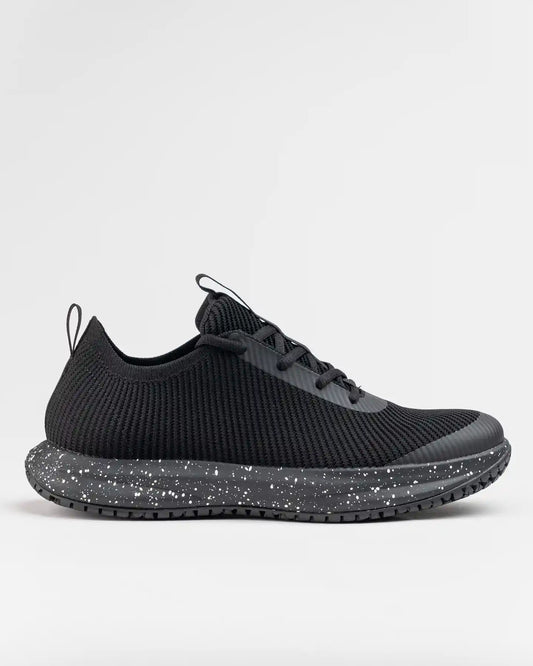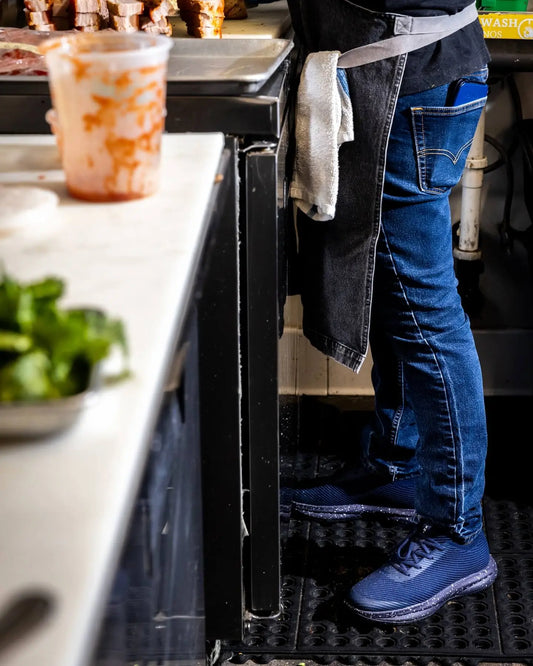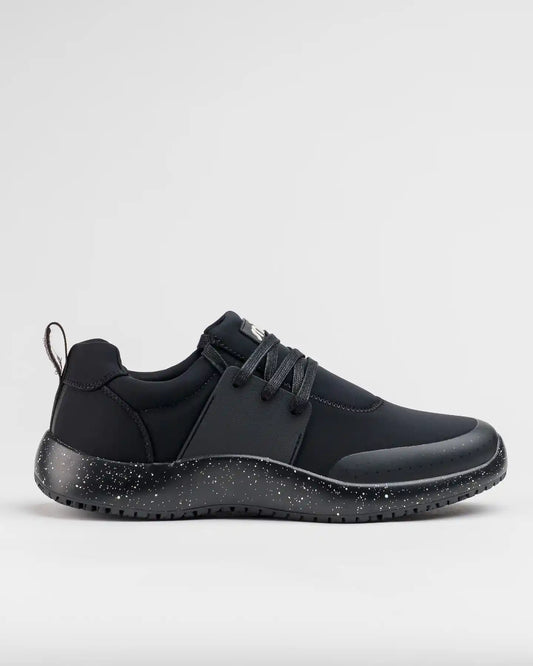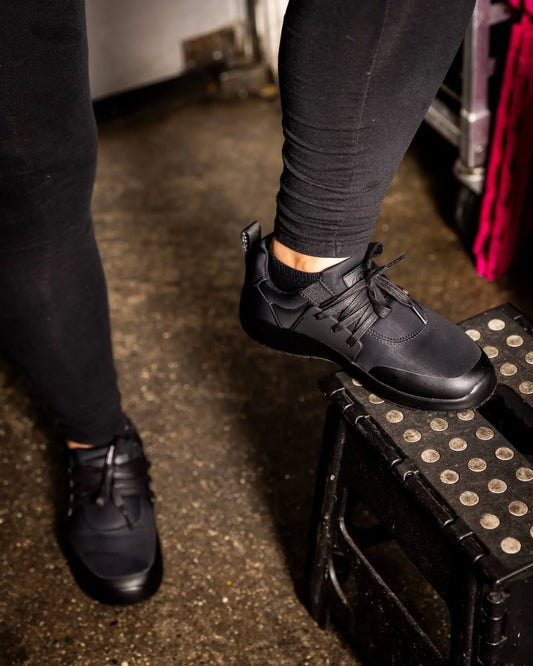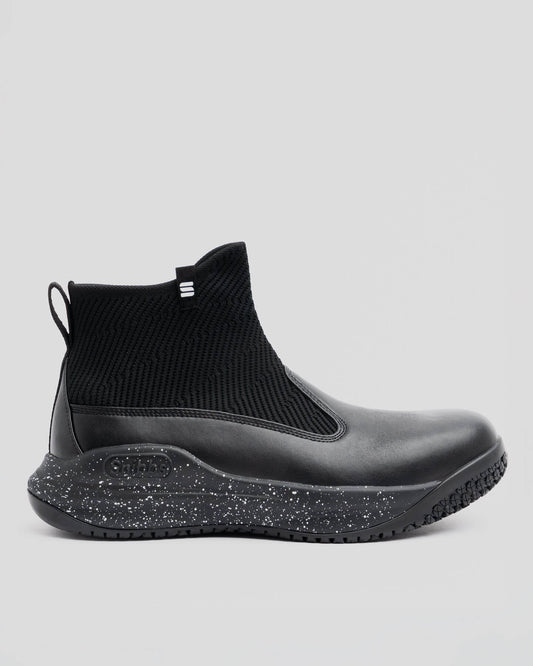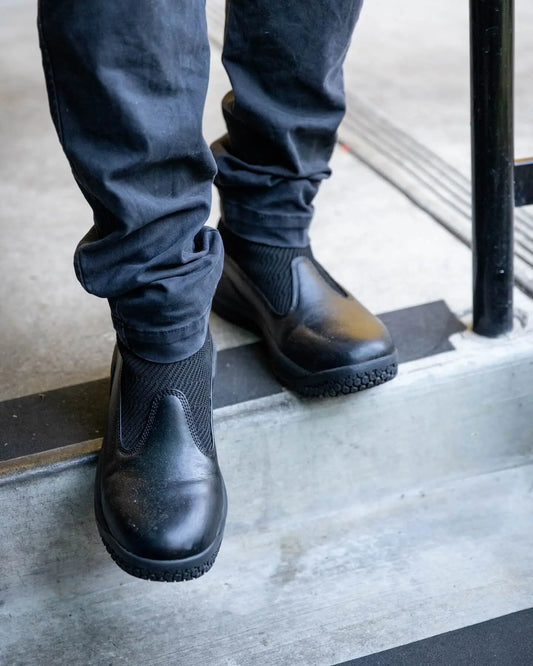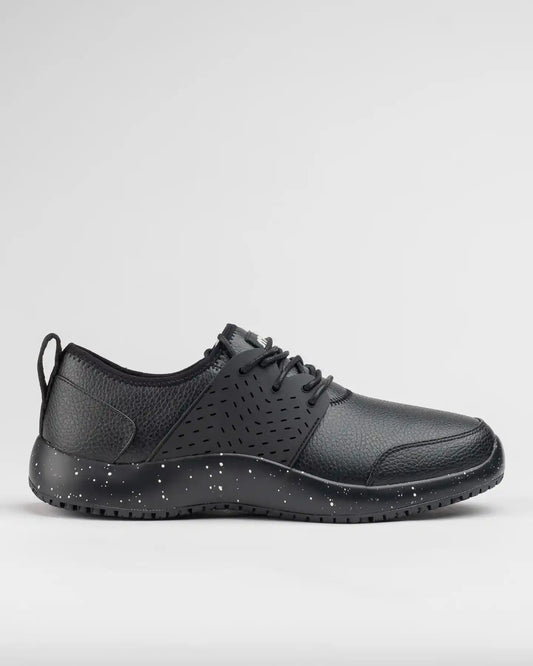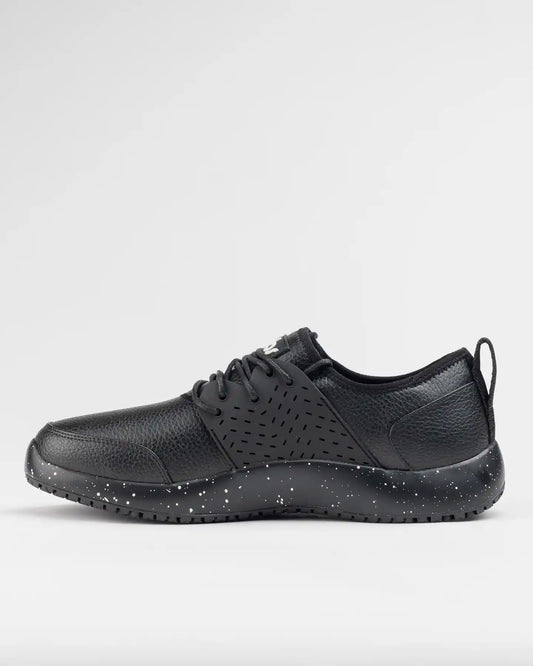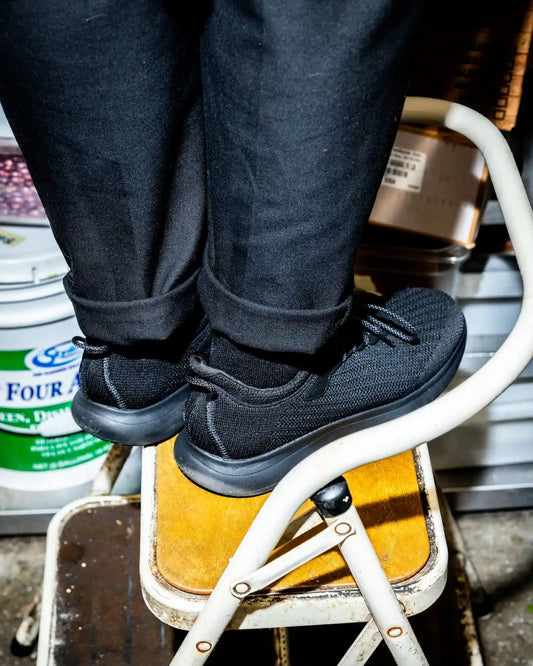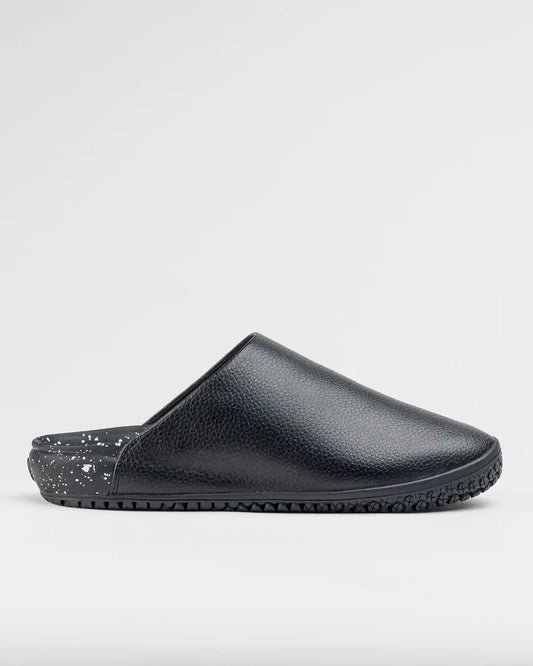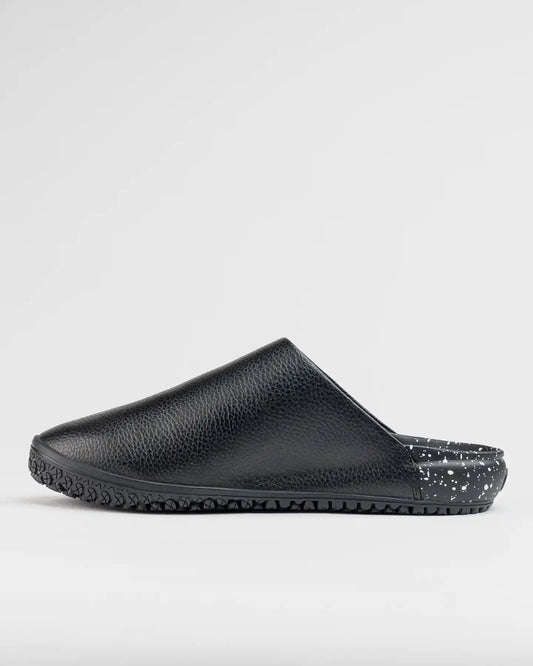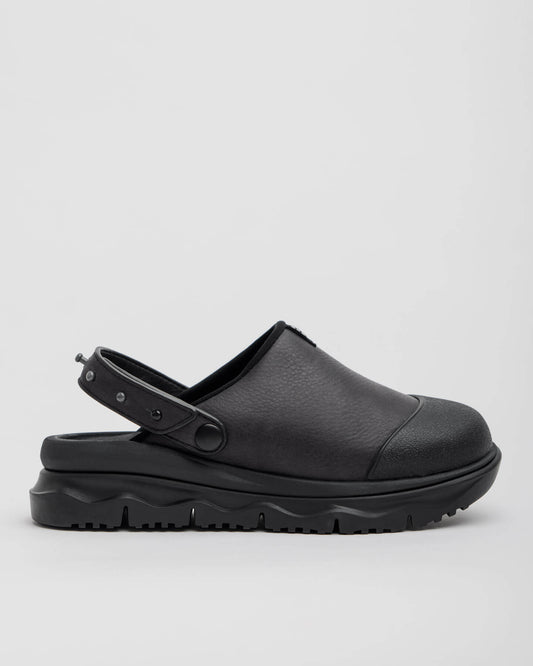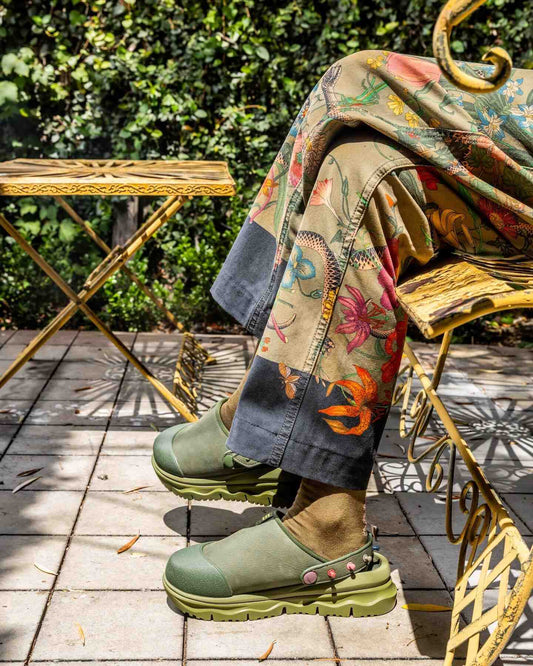Tips for Preventing Slips, Trips, and Falls in Healthcare
Alex Kinejara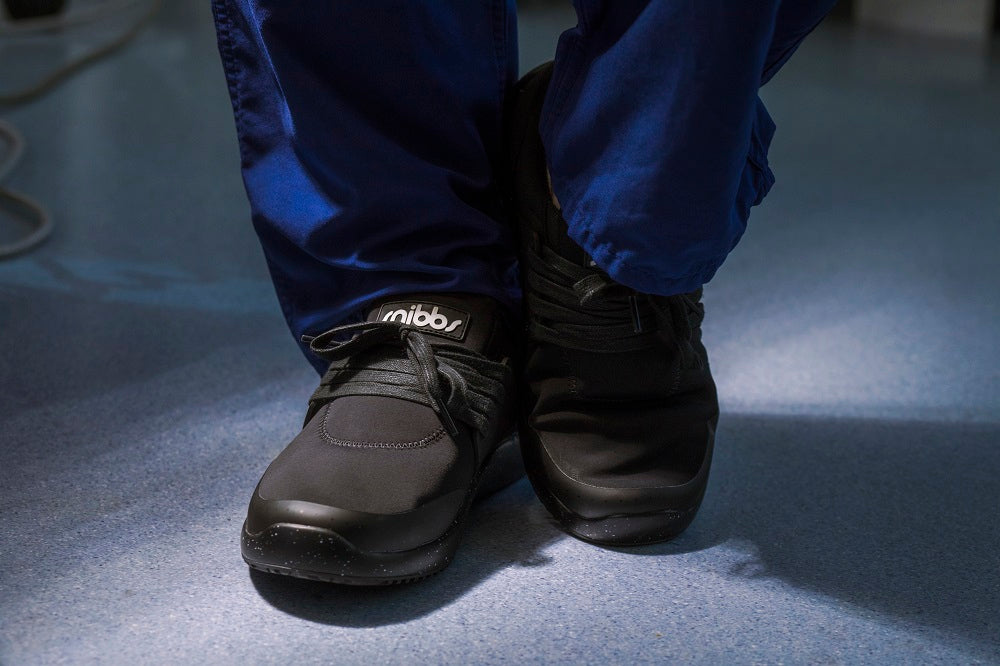
Working in healthcare means thinking on your feet figuratively and literally as you move from patient to patient. Based on both the type of work and environmental factors, that time in motion equals a higher rate of slipping and falling than many other professions.
But when you keep yourself informed of common causes and hazards of an on-the-job injury, you can keep yourself and your team safe from on-site injuries.
Let’s look at what to watch out for and ways of preventing slips, trips, and falls in healthcare facilities, including wearing the proper hospital work shoes.
What Causes Slips, Trips, and Falls in Healthcare Facilities?
Potential hazards, like a slippery surface or wet floor, are a top leading cause of injury for health professionals. Slips, trips, and falls—or STFs—make up 66% of insurance claims in the healthcare industry. Common causes include:
- Slippery surfaces – In the healthcare world, things can get messy. Incidents that can make a surface slippery and a fall risk can run the gamut from a beverage spill in the cafeteria to snow or rain tracked in by patients or employees, and every healthcare worker is prone to them. Various situations can create unexpected wet surfaces on linoleum, wood, and tiled floors. Even if it’s just a small patch, hurrying or turning on a wet surface, particularly without non-slip shoes, can easily result in an STF.
- Worn or damaged surfaces – Healthcare facilities include parking lots or ramps, connecting areas, receptions, often-vast hallways, storage, and individual consultation and patient rooms. These can be many types of surfaces, steps, and surface mats, most with a high level of traffic. When any of these is improperly maintained, cleaned, or placed, they can create STF hazards.
- Poor footwear – The right shoes are as important for healthcare professionals as they are for pro athletes. Work shoes for nurses need to have non-slip soles, be properly fitted, and provide adequate support to reduce fatigue, slipping, and stumbling.
- Speed and attention – Even if you’re not working in a surgical or emergency setting, you’re often called upon to assist people in pain or who need immediate help. The quick response and dedicated attention that helps patients can also take your attention off of your environment or result in moving faster than is safe.
How Can You Prevent Slips, Trips, and Falls?
STFs are accidents, after all, so is there more to do besides just crossing your fingers and hoping you don’t slip, trip, or fall? Absolutely!
Slip, trip, and fall prevention occurs at multiple levels, including:
- Individual healthcare professional choices
- Management incentives and programs
- The environment and upkeep of the healthcare facility
- Administrative policies and prioritization
- Communication and procedures related to patients’ impact on the facility
Below we’ve gathered tips for individuals and organizations to reduce slips, trips, and falls among healthcare teams.
1. Communicate and Care for Minor Injuries
Many people take pride in working through the pain or being more stoic than helpful when suffering from minor injuries or soreness. Staying on top of small weaknesses and any impact they have on your mobility, response time, and ease of movement can help avoid adding on a more significant injury.
- Observe and assess your state of being with compassion and nonjudgement
- Communicate any physical issues with your manager and team
- Slow down and move mindfully in non-emergency situations
- Ask for help when you need it
There’s a balance between calling in sick for every slight twinge and causing damage to yourself or others by ignoring and overstressing your body; finding that balance can prevent injuries like STFs.
2. Wear Non-Slip Shoes
Shoes can make or break your day as a healthcare practitioner; they’re important for your overall comfort and ability to stand and move frequently, and they’re also your number one method of STF prevention. Your shoes should provide:
- Proper length and width for usual fit and to accommodate slight swelling
- Slip-resistant rubber outsole certified by the Brungraber Mark II Test
- Deep treads for better traction
- A firm grip on your heel and deep heel cups for ankle stability and alignment
- Arch support
- Toe wiggle room
- Support your stability and balance
One of the first signs that your shoes need replacement is wear to the treads. So ask yourself, “how often should nurses replace shoes?”, inspect them routinely and pay attention to the degeneration of comfort or support as a signal to replace them.
3. Incentivize Footwear Practices and Policies
To ensure a healthcare team wears proper footwear to prevent STFs, management can support individuals by backing up non-slip shoe policies with programs to incentivize shoe purchases.
This can include redeeming an expense reimbursement up to a set price on a periodic purchase of new shoes to help staff avoid wearing shoes past their traction effectiveness. Including incentives with deadlines can help with:
- Frugal employees reluctant to replace shoes that are still technically wearable
- Employees unaware of gradual comfort, support, or traction loss over time
- Forgetful employees who move shoe replacement to the bottom of their to-do list
Comfortable, non-slip shoes can also aid in preventing healthcare worker and nurse back pain from walking or standing too long.
4. Prioritize Spills Clean-Up
A minor spill on a walking surface and in the work area can lead to a major injury. Everyone in a healthcare facility needs to take spills seriously and help ensure they are reported and addressed as quickly as possible. This may include:
- Clear policies on what to do and whom to notify for a spill in any area
- Policy refreshers, perhaps backed with a thank-you program for notifiers
- Easily accessible hazard signage to prevent anyone from treading on the spill
- Top prioritization of spill clean-up by the facilities team
5. Improve Parking Lot Safety
Exteriors can be high-risk zones for slips, trips, and falls—nearly a quarter of healthcare facility SFTs occur in the parking lot.1 Common causes include:
- Sloping or uneven walking areas
- Cracks or debris
- Littering or spills that aren’t cleaned up
- Poor lighting
- Deteriorated or insufficient markings and signage
- Ice and snow on parking and walking surfaces
- Performance of surface grip under wet conditions
This category is an administrative responsibility, but you can help by paying attention to your environment and bringing any hazards to management’s attention.
6. Heat-Map the Accident History
History is doomed to repeat itself—unless you learn from it. A heat map plots out exactly where every patient and staff accident and injury, including STFs, has taken place in the facility. The data can be analyzed for time of day, day of the week, type of injury, etc.
This can go a long way toward:
- Understanding common hazards at a facility and traffic level
- Prioritizing upgrades to lighting, surface repairs or changes, or signage needs
- Recognizing the time and dollar value of investing in accident prevention
7. Work with Your Insurer
An administrator or team manager reaching out to work with the facility’s insurer can benefit both parties by reducing expensive claims payable by the insurer and potentially reducing or maintaining insurance premiums by following safety practices and suggestions. Insurers may be able to help with:
- A facility review by an insurance representative to identify high-risk areas
- Providing research and additional tips specific to healthcare facility safety
- Reviewing claim histories to identify policy or practice improvement opportunities
8. Keep It Dry on Wet Days
Rainy or snowy days can lead to an endlessly slushy mess in entryways, with soaked-through floor mats and reception areas. Practices to reduce slip-and-fall zones from precipitation can include:
- Industrial or high-flow fans and vents to keep air circulating
- Frequent snow and ice clearing
- Extra floor mat coverage during wet weather
- Replacing floor mats mid-day
- Adding more exterior awning coverage to shake off rain and snow
- Additional janitorial coverage to dry-mop surfaces on wet days
9. Make Wheelchairs and Walkers Available
Patients who need support to walk or navigate the facility are both at risk of STFs and a risk factor for others. Providing wheelchairs and walkers near the entry to use on-site can help reduce injury strains and the need for staff to physically support patients moving throughout the facility.
There is also a quick visual cue that can help others adjust their movements in a congested area.
Who Is Responsible for Preventing Slips, Trips, and Falls?
Preventing STFs as much as possible involves both individual professionals and healthcare administration. Connect with your administrators and ask about their accident prevention planning.
If they aren’t already following the suggestions above, bring to their attention that:
- STFs cost in workers’ compensation, insurance claims, and higher insurance premiums
- Unavailable staff can lower patient care or lead to higher-priced temporary staffing
- A safety-first environment is a benefit to both attracting patients and retaining good staff
As an individual, you can champion practices to avoid injury among your colleagues as well as attend to your own safety practices. They can benefit from reminders that:
- Healthcare professionals have an above-average rate of STFs
- These types of injuries are often painful and may cause lingering soreness or weakness
- STFs can keep you from performing at 100% at work and play for a long time
Take the First Step Toward STF Injury Prevention
One of the tips above that you can address immediately is your footwear. Take a look and make sure you’re wearing the right shoes for your job. Are they designed for healthcare work? Do they fit comfortably and support standing and movement? Are the treads deep and unworn?
When you’re ready for a new pair of high-performance, non-slip shoes designed for the rigors of healthcare work, consider Snibbs. Our footwear—including the new all-black Eclipse sneakers—have the features and quality to keep you secure and comfortable.
Designed by and for healthcare professionals, Snibbs slip resistant work shoes work hard for hard workers.
Sources:
- The Hartford. Slip, Trip and Fall Prevention for Healthcare Workers. https://www.thehartford.com/insights/home-workplace-safety/slips-trips-falls-in-healthcare

